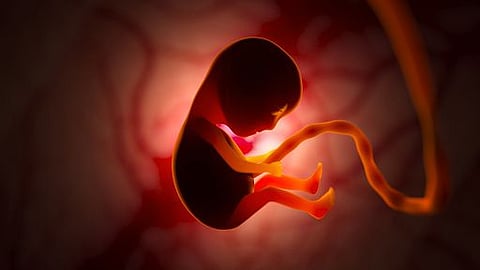

New research by a scientist at the Milner Centre for Evolution at the University of Bath suggests that “selfish chromosomes” explain why most human embryos die very early on. The study, published in PLoS Biology, explaining why fish embryos are fine but sadly humans’ embryos often don’t survive, and have implications for the treatment of infertility.
Professor Laurence Hurst, Director of the Milner Centre for Evolution, investigated why, despite thousands of years of evolution, it’s still so comparatively hard for humans to have a baby.
The immediate cause of much of these early deaths is that the embryos have the wrong number of chromosomes. Fertilized eggs should have 46 chromosomes, 23 from mother and 23 from father.
Professor Hurst said: “Many embryos have the wrong number of chromosomes, often 45 or 47, and nearly all of these die in the womb. Even in cases like Down syndrome with three copies of chromosome 21, about 80% sadly will not make it to term.”
There are number of clues that Hurst put together. Firstly, when the embryo has the wrong number of chromosomes it is usually due to abnormalities that occur when the eggs are formed mother's body. In fact, over 70% of eggs formed have the wrong number of chromosomes.
Secondly, the abnormalities in the first of two steps in the formation of eggs. The first step is vulnerable to mutations, and it can affect more than 50% of the eggs, forcing the partner chromosome to be destroyed, a process known as centromeric drive. This is well studied in mice, long suspected in humans and previously suggested to somehow relate to the problem of chromosome loss or gain.
What Hurst noticed was that, in mammals, mutation does not have a significant impact resulting in an egg with more or less number of chromosomes. In mammals, because the mother continuously feeds the developing fetus in the womb, it is evolutionarily beneficial for embryos developing from faulty eggs to be lost earlier rather than be carried to full term.
Hurst explained: “This first step towards formation of egg is odd. One chromosome from a pair will move towards the egg the other will be destroyed. Remarkable recent molecular evidence has found that when some chromosomes detect that they are about to be destroyed during this first step, they change what they do to prevent being destroyed, potentially causing chromosome loss or gain, and the death of the embryo.
What is remarkable, is that if the death of the embryo benefits the other offspring of that mother, the mutation is better off because it kills embryos”.
“Fish and amphibians don’t have this problem”, Hurst commented. “In over 2000 fish embryos no abnormality was found. Rates in birds are also very low, about 1/25th the rate in mammals. Hurst notes, this is predicted as there is competition between nestlings after they hatch, but not before.
In contrast, chromosome loss or gain is a problem for every mammal. Hurst commented, “It is a downside of feeding our offspring in the womb. If they die early on, the survivors benefit. It leaves us vulnerable to this sort of mutation.”
Hurst suspects that humans may indeed be especially vulnerable. In mice the death of an embryo gives resources to the survivors in the same brood. This is gives about a 10% increase in survival chance of the others. Humans, however, usually just have one baby at a time and the death of an embryo early on enables a mother to rapidly reproduce again she probably never even knew her egg had been fertilized.
Preliminary data shows mammals such as cows, with one embryo at a time seem to have especially high embryo death rates owing to chromosomal errors, while those with many embryos in a brood, like mice and pigs, seem to have somewhat lower rates.
Hurst’s research also suggests that low levels of a protein called Bub1 could cause loss or gain of a chromosome in humans as well as mice.
Hurst said: “The levels of Bub1 decrease as mothers get older and as the rate of embryonic chromosomal abnormalities increase. Identifying these suppressor proteins and increasing their level in older mothers could restore fertility.
“I would hope too that these insights will be one step to helping those women who experience difficulties getting pregnant, or suffer recurrent miscarriage.” (SP/Newswise)
Join MedBound - an ecosystem for students and professionals of medical and health sciences.
